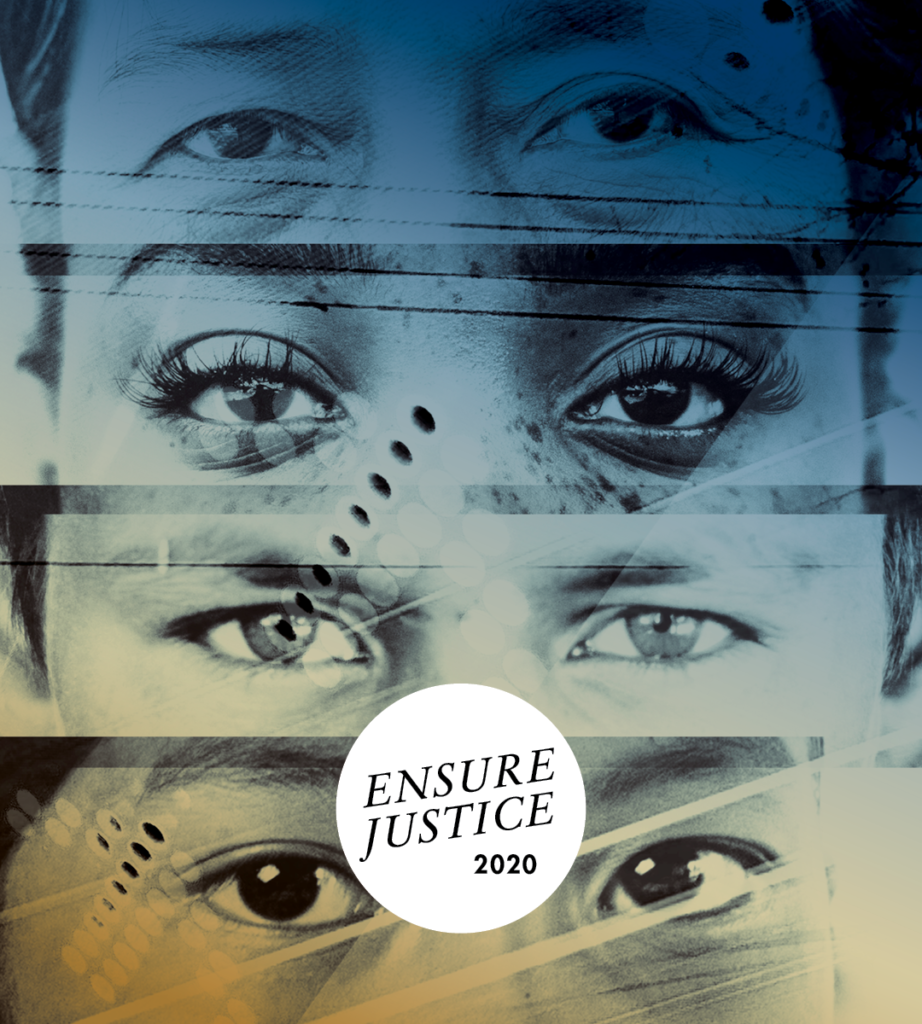The Orange County Department of Education is partnering with the Global Center for Women and Justice at Vanguard University to host a conference on human trafficking March 6 and 7.
Hosted on the Vanguard campus in Costa Mesa, Ensure Justice 2020 will feature more than two dozen anti-trafficking experts and educators who can break down the warning signs and offer strategies for protecting vulnerable populations at risk of exploitation and violence. The conference, which will include several OCDE speakers, is open to parents, educators, law enforcement, service providers, students and community members.
 So what exactly is human trafficking, and how do children become vulnerable? We recently reached out to the Global Center for Women and Justice for a rundown of what you should know.
So what exactly is human trafficking, and how do children become vulnerable? We recently reached out to the Global Center for Women and Justice for a rundown of what you should know.
Myths vs. facts
As defined by the U.S. Department of Homeland Security, “human trafficking involves the use of force, fraud, or coercion to obtain some type of labor or commercial sex act.” While you might be familiar with this definition, myths and misconceptions linger. Here are just a few.
MYTH: Human trafficking only occurs in developing countries.
FACT: Human trafficking occurs around the world, in every country. In 2017 and 2018, the Orange County Human Trafficking Task Force assisted 415 human trafficking victims.
MYTH: Victims of human trafficking are only people from other countries who are poor.
FACT: Anyone can become a victim of human trafficking regardless of ethnicity, race, gender or socioeconomic status.
MYTH: If an individual was not forced to perform commercial sex acts, then it is not human trafficking.
FACT: Regardless of whether the individual was coerced, anyone in U.S. under the age of 18 who is induced to perform a commercial sex act is a victim of human trafficking. Persons 18 and over can also be victims of human trafficking if they were coerced through fraudulent job opportunities.
Labor trafficking
Labor trafficking, as defined by the Trafficking Victims Protection Act of 2000, is “the recruitment, harboring, transportation, provision, or obtaining of a person for labor or services, through the use of force, fraud, or coercion for the purpose of subjection to involuntary servitude, peonage, debt bondage, or slavery.” Especially vulnerable to labor trafficking are those with an immigration status, as well as those who are in debt or in poverty. Traffickers exploit these hardships and utilize various forms of force, fraud or coercion to take advantage of the labor of others for little or no pay.
Often, the victim feels trapped in their situation because the trafficker exerts some type of physical or psychological control. This can include physical abuse, threats of violence against the victim or their victim’s family, the threat of deportation, a lack of language skills, and the confiscation of legal documents. In 2018, the most common jobs people were compelled to perform were domestic work, food service, agriculture and construction.
Children who are vulnerable
While anyone can become a victim of human trafficking, data suggest that children most vulnerable to exploitation include those who are homeless, had run away from home, identified as LGBTQ, had refugee or migrant status, or had been involved in the child welfare system. African American and Latino children are also disproportionately represented among child sex trafficking victims.
A trafficker will often take advantage of a child’s vulnerabilities by forming a bond and then using that relationship to exploit them through sex or labor trafficking. A child’s socioeconomic status, experience of abuse, food insecurity, mental health challenges and other factors increase their vulnerabilities to being trafficked.
Resources in Orange County
Understanding that a lack of resources can put a child at risk for trafficking, 211OC is an organization that supports children and families with legal assistance, food, transportation and more. On the 211OC website, simply type in your ZIP code to find relevant information and resources specific to your area. 211OC’s website can be utilized for numerous needs and is extremely beneficial to those struggling to find local resources.
Digital safety
With technology permeating nearly every aspect of our lives, it’s important to learn the basics of online safety to better protect your child from cyber-predators.
“Sextortion” is the most common form of online exploitation. It involves an online predator grooming a child to “take sexually explicit images and/or ultimately meet face-to-face with someone for sexual purposes, or to engage in a sexual conversation online or, in some instances, to sell/trade the child’s sexual images.” This type of victimization can occur across virtually any online platform that kids commonly access, including social media, gaming and messaging apps.
The National Center for Missing and Exploited Children has various resources that provide parents with information on how to protect their children from being exploited online. It also offers educational programs such as NetSmartz to teach children how to protect themselves.
Want to Learn More? Attend the Ensure Justice Conference March 6-7 by registering online at www.gcwj.org/ensure-justice. Parents can use the discount code OCDEPARENT to attend the conference for free on Saturday, March 7. And be sure to listen to the Ending Human Trafficking podcast.
